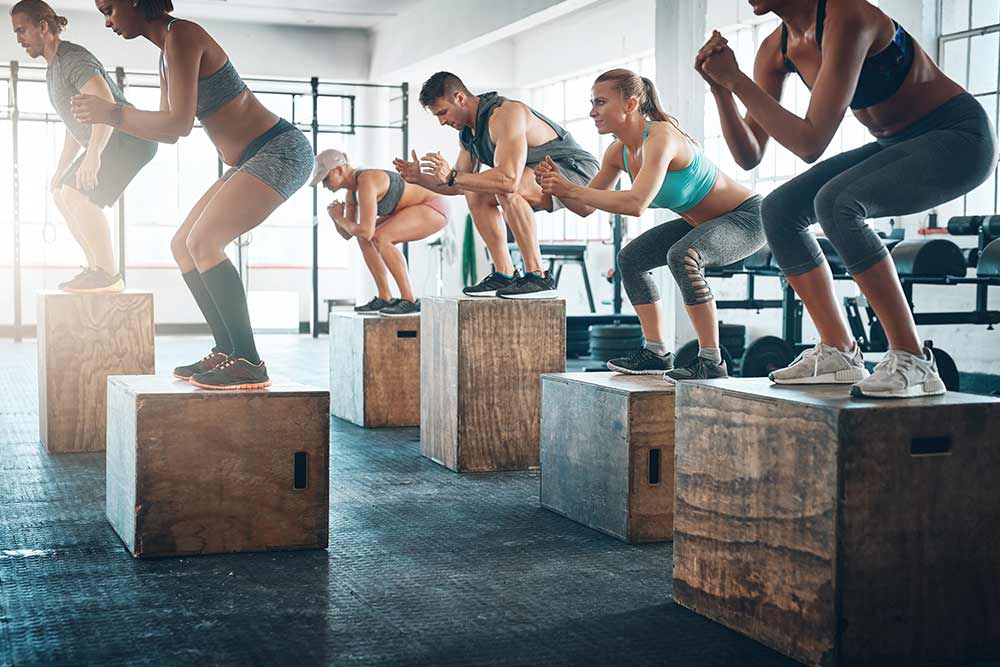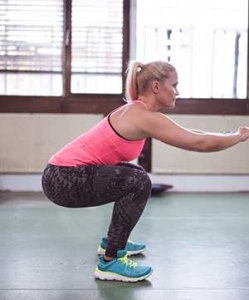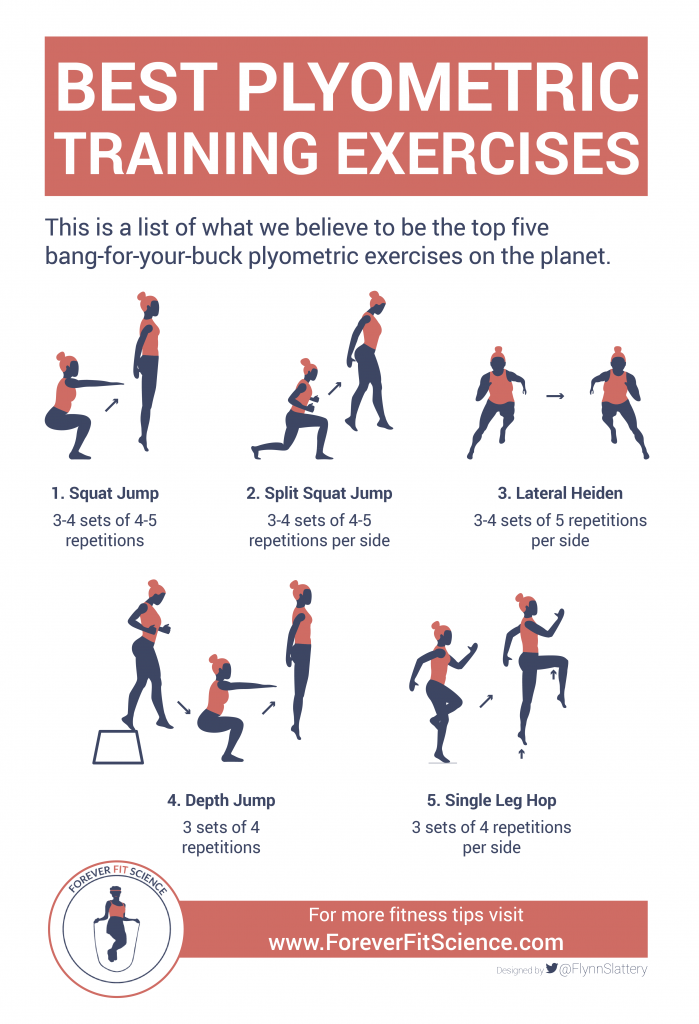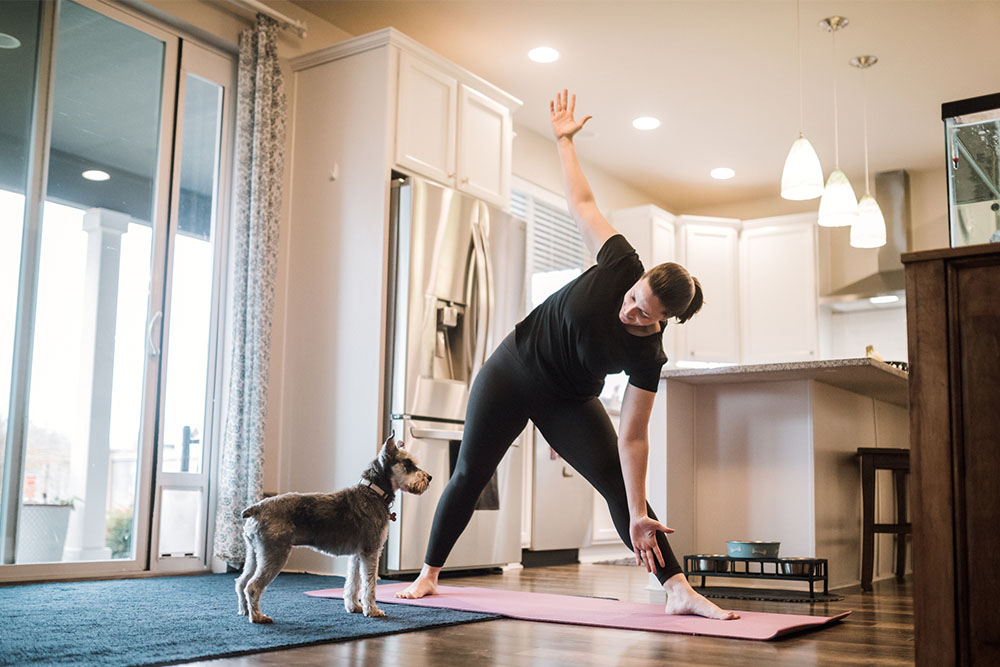Plyometric Training Exercises & Agility

Hunter Bennett
When it comes down to improving athletic performance, we often think about enhancing our training to maximize speed, power, and strength – which makes sense, as each of these plays a key role in improving our physical capacity.
But one key quality that often gets forgotten is agility.
What is agility?
Agility is one of the most important characteristics of all team sports athletes.
It can be defined as the ability to move and change the direction and the position of the body quickly and effectively. This is all while maintaining adequate neuromuscular control.
Additionally, agility requires fast reflexes, a high degree of coordination, good balance and speed. It requires the cognitive ability to respond to a changing situation.
Considering this, it becomes apparent that agility requires the integration of both physical and cognitive factors (Paul, 2016).
With this in mind, to demonstrate a high level of agility, you need to be capable of responding to what is going on around you. You need to be able to take in environmental information and then react to that information to the best of your physical capabilities.
Think about evading a would-be tackler?
There is a need to an adequate change of direction speed to physically evade him. You also need to be able to observe his speed, his direction of attack, and his intent and then react accordingly.
You need agility.
And recent research suggests that one key way to improve agility is through plyometric training.
What is plyometric training?
Plyometric training refers to a specific exercise modality that is built around jumping, hopping, bounding and skipping movements. They are performed in an extremely fast and explosive manner (Lloyd, 2012).
This is markedly different from other power-based training modalities. It requires rapid and repeated contacts with the ground, in which your bodyweight acts as the only source of external load.
This mode of training is used to target what is known as the ‘stretch-shortening cycle’ (or SSC, for short).
The SSC describes the cycle of contraction that your muscle tissue undergoes during almost all athletic movement tasks.
You see, during those movements that require rapid ground contacts (such as sprinting, changing direction, jumping, and bounding), your muscle undergoes a rapid eccentric contraction. This is followed by a short transitional period, before finally moving into a state of rapid concentric contraction.
During the eccentric phase, the muscle tissue is an absorbing force, and during the concentric phase, it is expressing that absorbed force. During the transition phase, your body is converting this absorbed energy into usable energy (or force).
Now, by training your ability to use the SSC, plyometric training offers some unique benefits.
Related Article: Maximize Performance With Plyometrics & HIIT
What is plyometric training good for?
Plyometric training elicits changes to the muscle and tendinous tissue within the body. This leads to improvements in your ability to use the SSC during athletic movements:
- Firstly, your ability to store and use the energy produced during the eccentric portion of muscle contraction is increased (Bojsen-Moller, 2005)
- Secondly, the neural efficiency at which you both recruit and fire muscle fibers during muscular contraction is also enhanced (Bobbert, 2005)
As a result, plyometric training allows you to maintain greater muscle stiffness when you strike the ground during athletic tasks, while also increasing your ability to produce force after you have struck the ground.
And the results?
Some seriously improved performance.
What are the benefits of plyometric training?
You see, these changes essentially result in more explosive, more powerful, and more rapid athletic movements. This means greater speed and acceleration, improved change of direction capacity, and better jumping performance (Michailidis, 2013).
In short, improvements in all aspects of athletic performance.
Interestingly, the results don’t stop there.
Plyometric training has also been shown to improve running-based endurance performance by enhancing your running economy – which really indicates that it should also hold a key place in the training of endurance athletes as well (Spurrs, 2005).
How does plyometric training improve agility?
If we consider that plyometric training has the ability to improve power output, then it should come as no surprise that it also has the ability to improve agility.
Remember, agility requires the integration of our cognitive and physical abilities – and plyometrics very much enhance the physical component of this equation to a massive degree.
With this in mind, research has shown that performing a plyometric training program consisting of two sessions per week, for as little as 6 weeks in total duration, can cause significant improvements in multiple measures of agility (Miller, 2006).
These improvements were thought to come as a direct result of the mechanisms mentioned above – specifically, improvements in neural efficiency, and improvements in SSC capacity.
Best plyometric training exercises
There are literally hundreds of plyometric exercises out there, all of which can be implemented at different time points and under several different circumstances to elicit the desired training response.
These exercises include basic jumping exercises such as squat jumps, tuck jumps, split squat jumps, and single leg lateral bounds, progressing all the way up to highly demanding exercises such as depth jumps.
With this in mind, I have put together a list of what I believe to be the top five bang-for-your-buck plyometric exercises on the planet.
1.Squat Jump
Squat jumps offer the perfect way to integrate plyometric exercises into your routine in a safe and effective manner. Simply dip down into a semi-squat position, and then explode up, jumping as high as you can in the process.
As soon as your feet contact the ground upon landing, immediately transition into another jump.
3-4 sets of 4-5 repetitions are perfect here.
2. Split Squat Jump
This movement essentially replicates the squat jump, although in this scenario we are starting in a split squat position – as such, all the explosive power is going to be produced from the front leg, while the rear foot is simply helping you maintain balance.
Starting in a split squat position, explode up as high as you can by driving your front foot into the ground. Land in the same position as you jumped from and repeat the process in a rapid and explosive manner.
3-4 sets of 4 repetitions per side are perfect here.
3. Lateral Heiden
A lateral heiden not only teaches us how to produce force rapidly from a single leg stance, but also in a lateral manner. This makes it perfect for team sports athletes who need to be able to change direction rapidly.
athletes who need to be able to change direction rapidly.
Start by standing on one leg. Proceed to dip into a slight squat position, and then bound laterally onto the other leg (bound in the natural direction of that leg). Upon landing, immediately bound back the other way, landing on the original leg.
Repeat this process for the set number of reps as explosively as possible.
3-4 sets of 5 repetitions per side are perfect here.
4. Depth Jump
A depth jump refers to a plyometric training exercise where you drop from a higher surface down to a lower surface before commencing an explosive squat jump. This increases the eccentric load placed on the muscle tissue, which is integral to maximizing the SSC.
With this in mind, simply start this movement by stepping off of a bench or box that sits around 12 inches from the ground. Upon landing, immediately explode into a squat jump, before then sticking the landing.
3 sets of 4 repetitions of this power are plenty.
5. Single Leg Hop
Last but not least, we have a single leg hop.
For this movement, simply begin by standing on one leg, before hopping as high as you possibly can. Return to the ground by landing on that same leg, before immediately exploding up into another hop.
This is a great way to develop single-leg power!
Again, 3 sets of 4 repetitions per side is adequate.
Plyometric Training Benefits For Specific Sports
Now, as you can imagine, because plyometric training has such a large impact on the muscle tissue and nervous system, it can also have a huge impact on the performance of on some of our most popular sports.
As a result, I have outlined some advice around plyometric training for athletes who compete in those sports.
Plyometric Training For Running
As I have already touched on, plyometric training has the ability to improve both running economy and power output.
This makes it one of the most effective ways of increasing running performance period, in which it is ideal for marathon runners, sprinters, and anything in between.
As runners don’t have to move laterally, the most important exercises are those that allow them to move in straight lines – as a result, split squat jumps, single leg hops, and squat jumps are going to be perfect here.
These offer the perfect means of plyometric training for speed and running endurance.
Plyometric Training For Soccer
Agility, acceleration, and change of direction capacity are three of the most important factors relating to the optimal performance of field sports such as soccer, football, and lacrosse (just to name a select few).
While each of the plyometric training exercises outlined above has a place in the plyometric training program of soccer athletes, the lateral heiden and the single leg hop are (in my opinion) arguably the most important.
Each of these movements is essential to developing a lateral change of direction speed, and single leg power.
Plyometric Training For Volleyball
Volleyball is hands down one of the most powerful sports on the planet – think about the explosive force that they produce during spikes and serves? It is truly incredible. Plyometric training can help!
With this bilateral jumping ability, it is important to note that they also need the capacity to move around the court quickly, responding to the strikes made by other players.
As a result, plyometric training for volleyball should at the very least include both lateral heidens and squat jumps.
Moreover, the addition of the depth jump will offer an effective way to improve their ability to manage the high eccentric load associated with the repeated jumps that occur during a single game of volleyball – thus also mitigating injury risk while still improving performance.
Related Article: Plyometric Vs Skills-Based Conditioning For Volleyball Players: How Each Stacks Up
Plyometric Training For Basketball
Last but not least we have basketball.
Basketball is one of the few sports on this planet that really requires the ability to jump vertically from both legs, bound laterally with power, hop with height, and sprint rapidly over extremely short distances – all in response to the surrounding environment.
It truly epitomizes agility.
As a result, each of the five plyometric training exercises outlined above should hold a place in a basketballers training program, as they collectively cover all of these needs – as such I would strongly suggest against excluding any!
Take Home Message
Plyometric training is one of the most potent training methods available to us when it comes to improving athletic performance.
With an abundance of research already demonstrating its capacity to improve speed, power, change of direction capacity, and even running endurance, we are now also seeing its exponential ability to improve agility.
The five exercises outlined in this article are some of the best plyometric training on the planet – so start implanting them into your program, and make sure you let us know what you think!
References
Paul, Darren J., Tim J. Gabbett, and George P. Nassis. “Agility in team sports: Testing, training and factors affecting performance.” Sports Medicine 46.3 (2016): 421-442.
Lloyd, S., et al. “The effects of 4-weeks of plyometric training on reactive strength index and leg stiffness in male youths.” The Journal of Strength & Conditioning Research26.10 (2012): 2812-2819.
Bojsen-Møller, Jens, et al. “Muscle performance during maximal isometric and dynamic contractions is influenced by the stiffness of the tendinous structures.” Journal of Applied Physiology 99.3 (2005): 986-994.
Bobbert, R and Casius A. “Is the effect of a countermovement on jump height due to active state development?.” (2005).
Michailidis, Y., et al. “Plyometrics’ trainability in preadolescent soccer athletes.” The Journal of Strength & Conditioning Research 27.1 (2013): 38-49.
Spurrs, R., Aron, J, and Mark, W. “The effect of plyometric training on distance running Performance.” European journal of applied physiology 89.1 (2003): 1-7
Miller, Michael G., et al. “The effects of a 6-week plyometric training program on agility.” Journal of sports science & medicine 5.3 (2006): 459.
JOIN OUR NEWSLETTER
You Might Like:
















